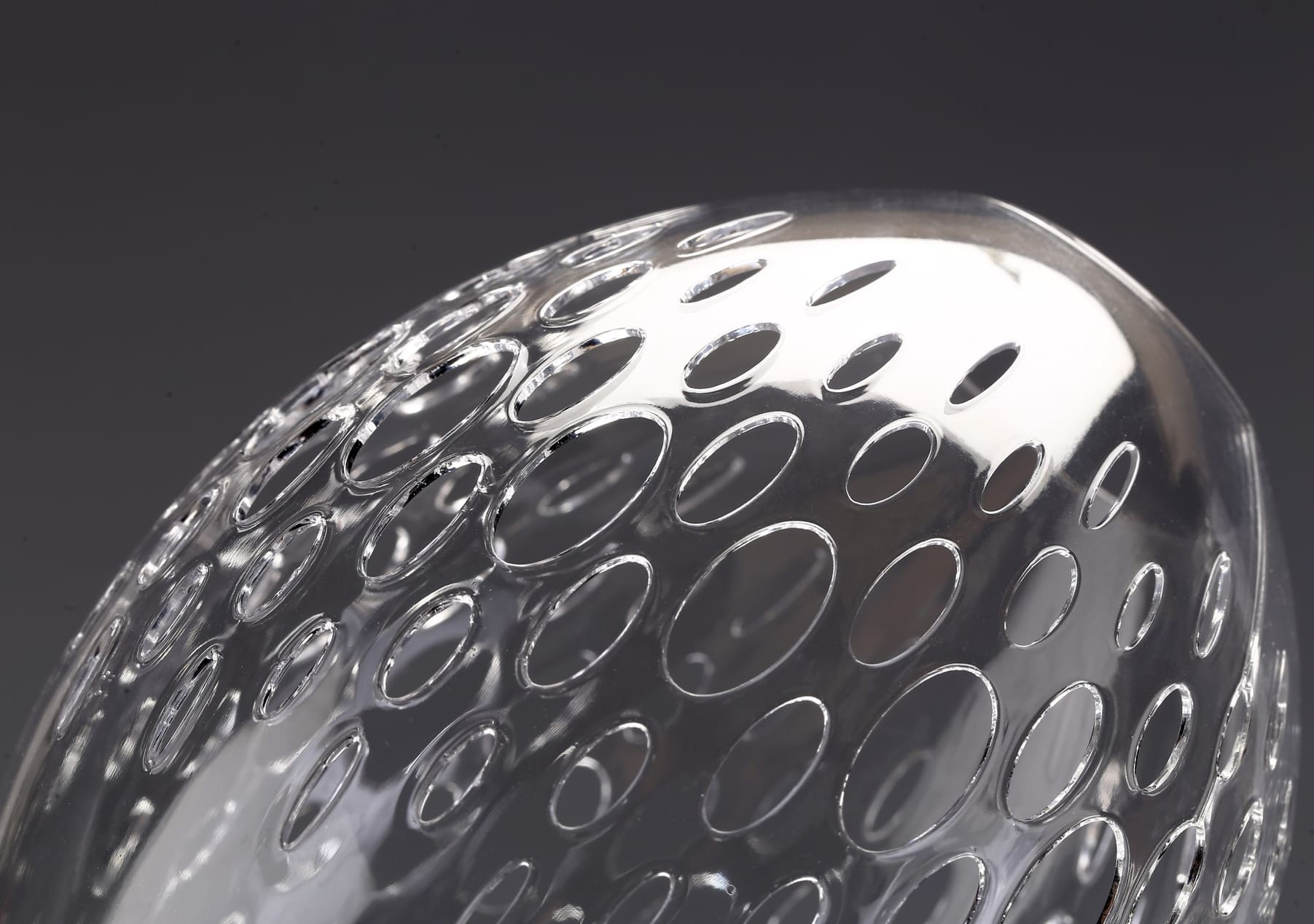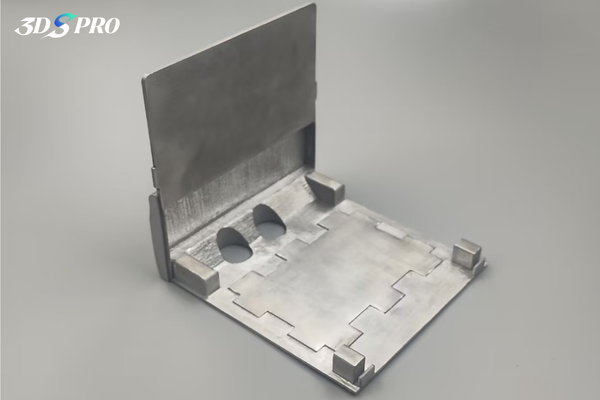MIT Engineers Have Developed the First Fully 3D Printed Electrospray Engine
MIT engineers have developed the first fully 3D printed electrospray engine designed for small satellites like CubeSats. Electrospray engines use electric fields to propel conductive liquid into high-speed charged droplets, enabling precise in-orbit maneuvers with greater propellant efficiency than chemical rockets.
Traditional electrospray thrusters rely on expensive semiconductor cleanroom fabrication, but MIT’s approach uses commercially available 3D printing techniques (two different types of vat photopolymerization printing (VPP)) to reduce costs and democratize space hardware.
The engine combines 32 emitters across eight modules, fabricated with two-photon printing for sharp tips and microfluidic channels, while the larger manifold block uses digital light processing. This hybrid approach optimizes scalability and precision.
The prototype outperformed existing electrospray engines in thrust efficiency and demonstrated that voltage modulation (instead of pressure adjustments) simplifies design, reduces weight, and enhances control.
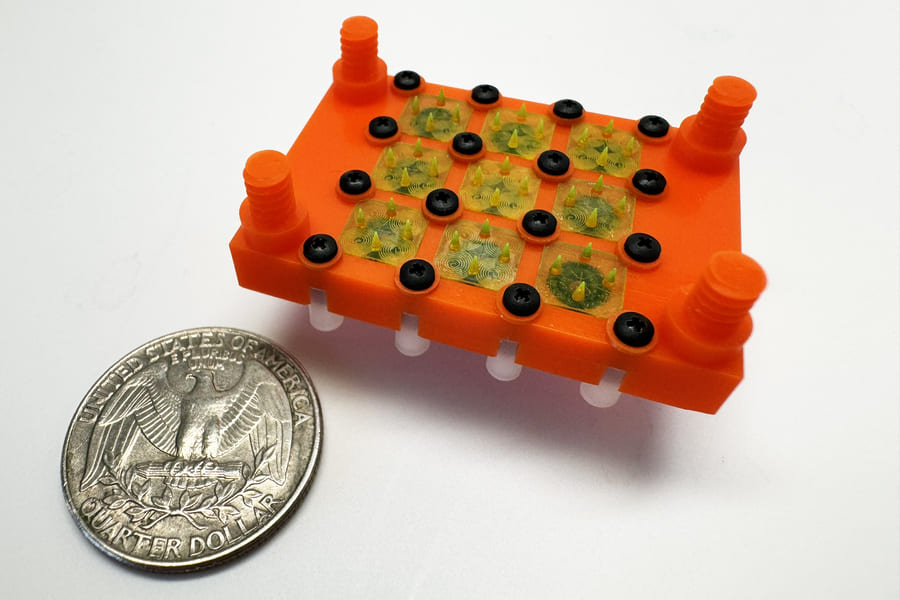
Image Source: MIT
2PP and DLP are Used
The development of MIT’s fully 3D printed electrospray engine hinges on two advanced additive manufacturing technologies: Two-Photon Polymerization (2PP) and Digital Light Processing (DLP). These methods were strategically selected to achieve the intricate geometries, micron-scale precision, and functional material properties required for high-performance space propulsion systems.
Two-Photon Polymerization (2PP): Nano-Scale Precision for Critical Components
2PP, also known as Two-Photon Polymerization, is a cutting-edge micro-3D printing technique that enables the fabrication of structures with resolutions down to 0.1 micrometers—far surpassing conventional 3D printing methods. 2PP uses a pulsed femtosecond laser focused into a photoresist material, triggering a chemical reaction only at the focal point where two photons are absorbed simultaneously. The result is the ability to create ultra-fine features, such as ion emitters and microfluidic channels, which are essential for the electrospray engine’s operation.
MIT’s team leveraged 2PP to produce components with submicron accuracy, ensuring optimal ion beam control and minimizing energy loss. For example, the engine’s emitter arrays, which generate thrust by ionizing and accelerating charged particles, require nanoscale uniformity to maintain efficiency in the vacuum of space.
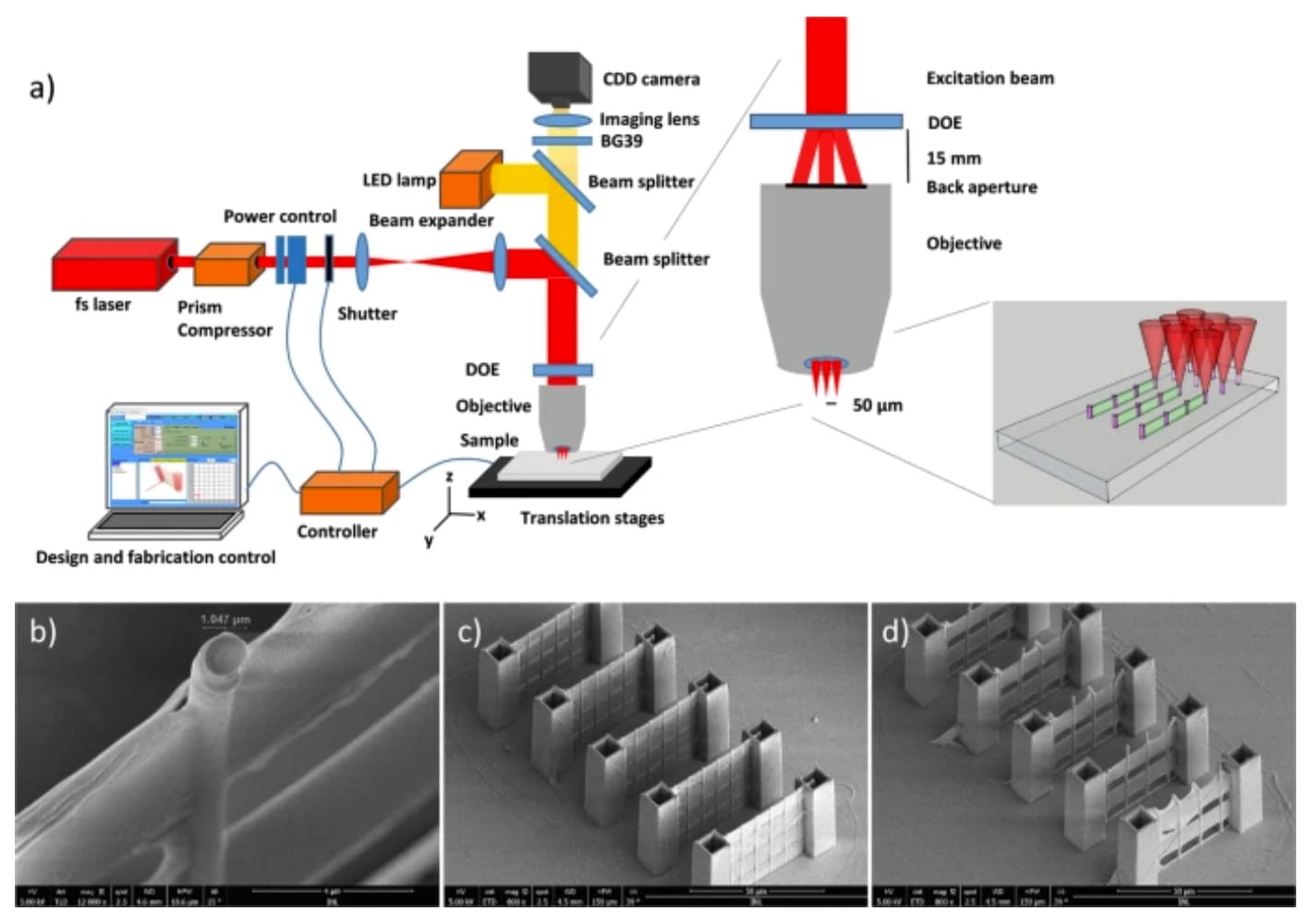
Image Source: Nature
Digital Light Processing (DLP): Rapid Prototyping of Complex Structures
Complementing 2PP, DLP technology was employed for larger structural parts and multi-material integration. DLP works by projecting UV light patterns onto a vat of photopolymer resin, curing entire layers simultaneously. DLP 3D printing offers high-speed production and excellent surface finish, making it ideal for components like the engine’s housing or fuel delivery systems.
A key advantage of DLP in this project is its compatibility with functional resins, including conductive or heat-resistant materials. For instance, MIT might utilize specialized resins to create electrically insulating layers or thermally stable manifolds, ensuring the engine withstands extreme temperatures and radiation in space environments. Additionally, DLP’s layer-by-layer curing process allows for graded material properties, enabling transitions between rigid and flexible regions within a single printed part—critical for vibration damping in propulsion systems.
The use of these advanced 3D printing methods underscores a broader trend in aerospace: leveraging additive manufacturing to consolidate parts, reduce weight, and enable designs.
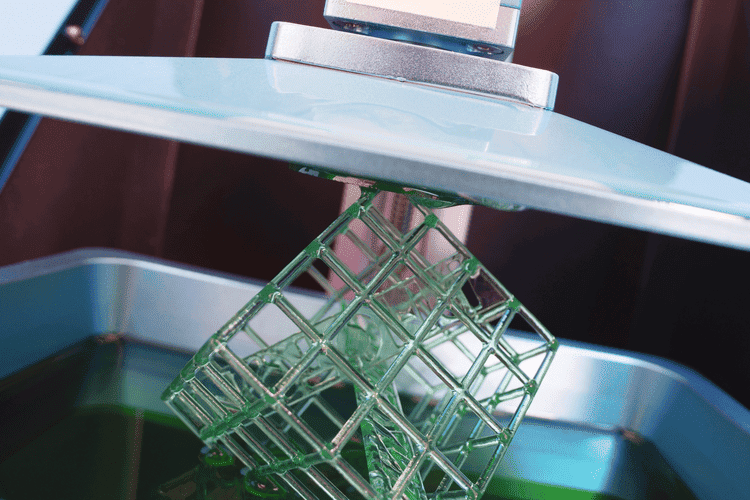
Can 3D printing provide more help to the aerospace industry?
3D printing is already revolutionizing aerospace, and MIT’s electrospray engine exemplifies its transformative potential.
1. Enabling Complex, Lightweight Designs
Traditional manufacturing struggles with intricate geometries, but 3D printing thrives on complexity. For example, aerospace giants like Airbus use 3D printing to create fuel nozzles that are 25% lighter and 5x stronger than conventionally machined parts.
MIT’s glass bricks, 3D printed from recycled materials, also demonstrate how lightweight, high-strength structures can reduce launch costs and improve fuel efficiency.
2. On-Demand Manufacturing
3D printing allows in-situ production of critical components, bypassing lengthy supply chains. The maritime industry has explored shipboard 3D printers to fabricate spare parts during voyages, a concept equally applicable to space missions.
3. Material Efficiency and Sustainability
Additive manufacturing minimizes waste by using only the material needed for the part. For instance, GE’s 3D-printed jet engine components reduce material consumption by up to 90% compared to subtractive methods. MIT’s glass brick project further emphasizes sustainability, utilizing recycled glass to create reusable building blocks—a model that could inspire recyclable satellite components.
4. Accelerating Prototyping and Innovation
Rapid iteration is critical in aerospace R&D. Companies use additive manufacturing to prototype complex parts quickly, slashing development cycles by months. This agility allows engineers to test novel designs—such as topology-optimized brackets or heat-resistant alloys—that were previously unfeasible.
Merging sensors, cooling channels, and structural elements into single printed units, as seen in MIT’s electrospray engine, will become standard in the future.













